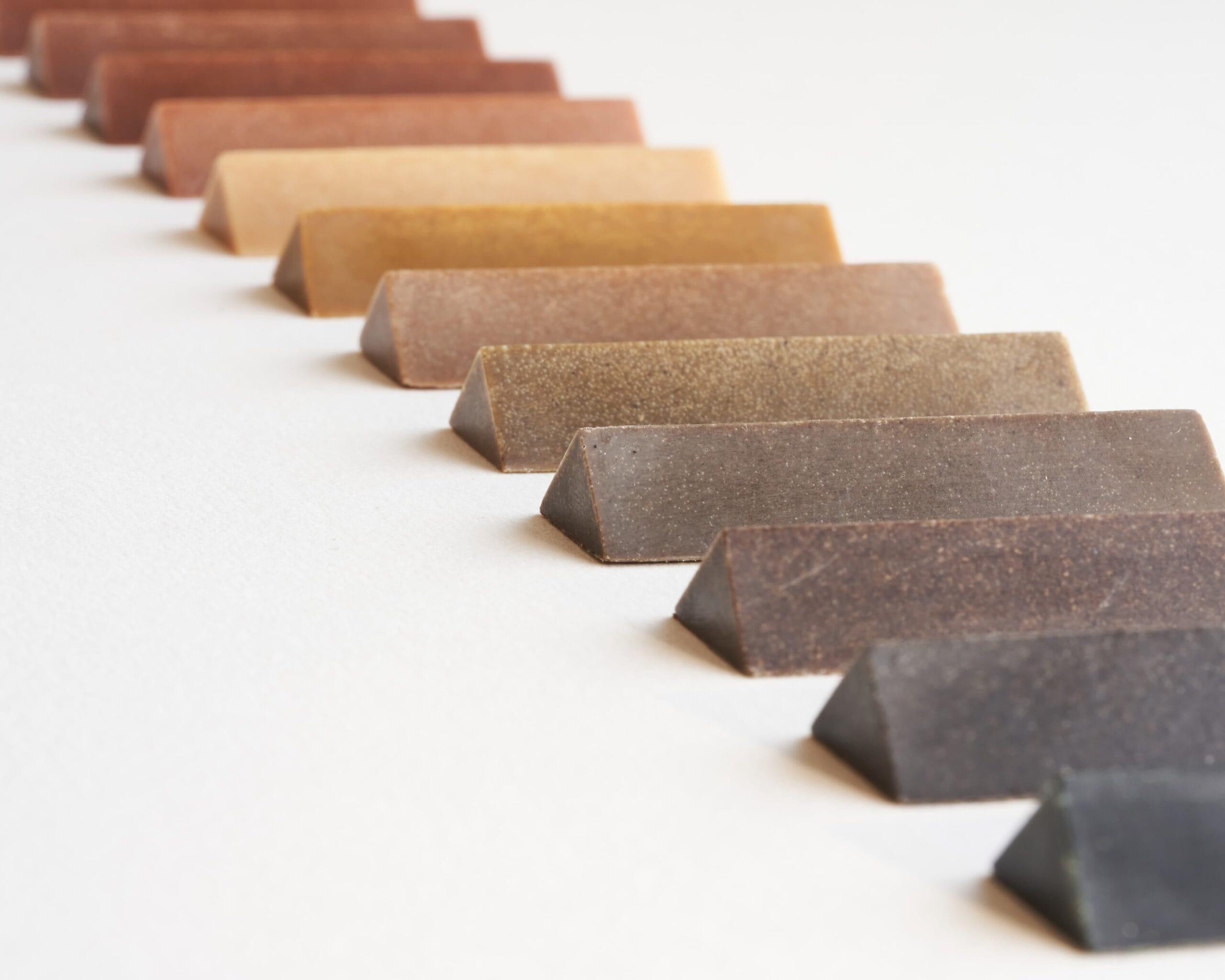Isaac Asimov’s ‘Foundation’ on a quarter-sized nanofiche disk. All images courtesy of Samuel Peralta, shared with permission
The global race for the moon is well underway, and as space programs around the world scramble to explore the lunar surface, another project vies for a tiny spot on the satellite. One of many endeavors by physicist and spec-fic author Samuel Peralta, the Lunar Codex is projected to send works by more than 30,000 artists, writers, filmmakers, and more to the moon later this year for safekeeping.
Split into four capsules with varying launch dates, the collection primarily consists of visual art, although books, podcasts, poetry, essays, music, and films are present, too. Artists from 158 countries and every continent contributed works, which are stored on either digital memory cards or a newer, analog technology known as NanoFiche. Similar to microfilm, this archival medium is lightweight because of its nickel base and can store 150,000 pages of information etched into a single 8.5 x 11-inch sheet. In a recent interview, Peralta likened the technological innovation to another apace archive: NASA”s “Golden Record,” which sent audio and images to the moon via the Voyager in 1977.
The first capsule of the Lunar Codex, the “Orion Collection,” already completed its trip with NASA’s Artemis I and returned on December 11, 2022. This fall, the remaining three will launch, with the “Nova Collection” slated to launch toward the Malapert A crater at the lunar south pole in October or November, the “Peregrine Collection” to the Sinus Viscositati plane in November or December, and finally, the “Polaris Collection” to the Nobile Crater and lunar south pole. These will remain on the moon.
Dime-sized nanofiche disks used in Lunar Codex’s Polaris time capsule
Given the archive is intended to offer a glimpse at life today, the Lunar Codex contains works that are distinctly 2023. There are prints by Ukrainian artist Olesya Dzhurayeva who was forced to flee Kyiv with her daughters after Russia began its war on the country, along with “New American Gothic” by Ayana Ross, who won the Bennett Prize for Women Figurative Painters in 2021. Ross’ inclusion, and those of other Bennett Prize finalists, is indicative of Peralta’s focus on sending work by a more diverse group of artists than earlier missions. “It’s fitting that, in parallel with Artemis—a program attempting to land the first woman on the Moon—the Lunar Codex is the first project to launch the works of women artists to the lunar surface,” he says in a statement, explaining further:
People have also pointed out other firsts, including being the first project to place contemporary film and music on the Moon. It is the first to include work from disabled artists; the work of artisans in wood, clay, bronze, stone, mosaics, cloth; inked tattoo work, digital art, spray-painted urban art; and to include poetry from a human-AI collaboration.
The aforementioned earlier missions date back to 1969 with Forrest Myers’ “The Moon Museum,” which inscribed drawings by Andy Warhol, Robert Rauschenberg, David Novros, John Chamberlain, and Claes Oldenburg onto a ceramic tile. Two years later, Paul van Hoeydonc created a small aluminum “Fallen Astronaut” sculpture that tagged along with Apollo 15. More recently, the nonprofit Arch Mission Foundation launched several “Lunar Libraries” containing everything from a copy of Wikipedia to Isaac Asimov’s sci-fi classic Foundation Trilogy, which, as shown above, is also aboard the Lunar Codex.
Heather Brunetti, “Pearl” (2020). Image courtesy of 33 Contemporary Gallery
As reported by The Guardian earlier this month, no nation owns the moon, although an unratified United Nations treaty states that any use should be universally beneficial. The momentum of the lunar race has subsequently sparked conversations about space colonialism and the potential for destruction, although Peralta reminds those concerned that the technology is designed to store a lot of information in very small spaces.
Ultimately, the Lunar Codex is optimistic, with a hope that future generations—or whoever stumbles upon the archive—will find joy and insight in the collections. Peralta told The New York Times that he considers the project “a message in the bottle for the future that during this time of war, pandemic, and economic upheaval people still found time to create beauty.”
Microphotograph of nickel nanofiche with RGB channel images of works on Lunar Codex’s Nova time capsule
Left: Sthef Millan, “In Puribus: Desplazamiento” (2020). Image courtesy of the artist. Right: John Hyland, “As the Twig is Bent, so is the Tree” (2021). Image courtesy of 33 Contemporary Gallery
Anna Jurinich, “The Delusion and Persistence of Peace” (2021). Image courtesy of the artist
Viktoria Savenkova, “Yesterday Today Tomorrow” (2019). Image courtesy of 33 Contemporary Gallery
Do stories and artists like this matter to you? Become a Colossal Member today and support independent arts publishing for as little as $5 per month. The article The ‘Lunar Codex’ Is Sending Works from More than 30,000 Artists to the Moon appeared first on Colossal.


